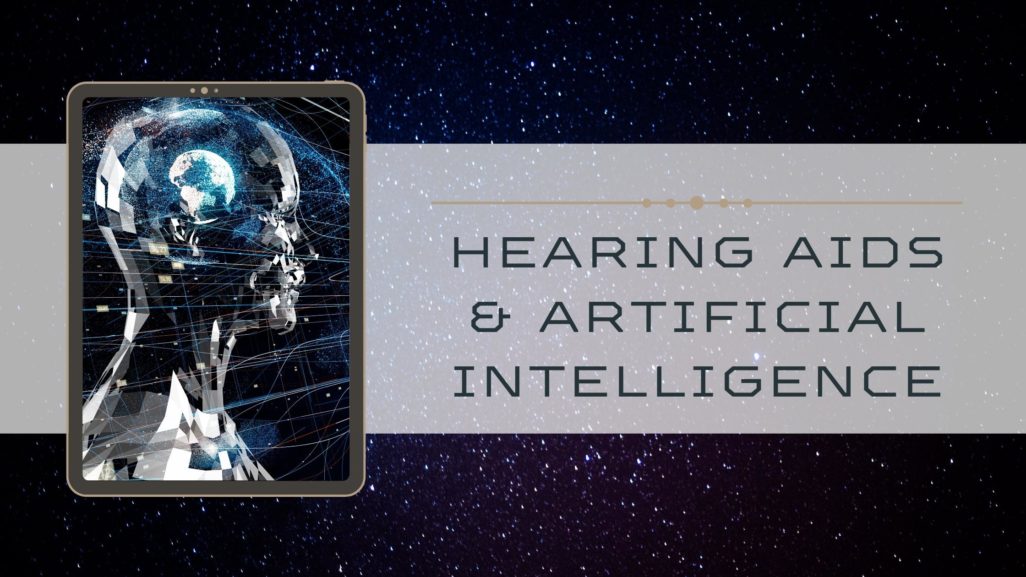Hearing Aids & Artificial Intelligence
What comes to mind when you think of artificial intelligence? Robots, driverless cars, and machines taking over are common imaginings of artificial intelligence (AI). But you likely already interface with and use AI daily. Hearing aids are among the many types of electronic devices that utilize AI technology to better integrate into daily life and enhance user experience.
What is Artificial Intelligence?
Essentially, AI is a problem-solving technology that is utilized by electronics and digital platforms (computers, televisions, smartphones, etc.) to perform tasks. Specifically, AI is a field within computer science that involves creating specific programs that can simulate human intelligence by performing different functions to solve complex problems. There are different forms or types of AI including machine learning, neural network, and deep learning. You are likely familiar with machine learning AI which uses algorithms which are a set of predetermined rules to process large amounts of data and make decisions, predictions, and recommendations. We use AI technology in our daily lives, common examples include:
- Email: our email automatically sorts messages into different folders – inbox, sent, spam, etc. Also while composing a message, automatic spell check is another feature that is possible because of AI.
- Social media: social media apps and platforms use AI to personalize what you see on your feed. It does this by studying your viewing history and populating your feed with similar things. Additionally, friend suggestions and filtering news are also common ways social media uses AI.
- Streaming services: television and music streaming services (Netflix, Spotify, Amazon, etc.) have recommendation engines that are powered by AI. AI uses your viewing history to make suggestions of what you can watch or listen to next.
Other daily examples of AI include using Google, smart assistants (Siri, Alexa, Cortana, etc.), and unlocking your smartphone using face ID. These examples highlight that AI is part of our everyday life, allowing us to complete regular tasks and engage in various activities conveniently.
AI & Hearing Aids
Hearing aids, similar to most electronic devices today, have experienced significant innovation over recent years. These hearing instruments used to be simple devices that absorbed, amplified, and helped process sound. But advancing technology has expanded the possibilities of hearing aids and what they are able to do. The use of artificial intelligence in hearing aid design is relatively new to the industry. The development and integration of AI have allowed hearing aids to learn from the environment the wearer is in and then make adjustments accordingly. AI also continues to produce innovative features that maximize sound quality and one’s overall listening experience.
How Hearing Aids Use AI
There are various ways that hearing aid devices use AI. Major examples of features and capabilities that are driven by AI include the following:
- Personalized programs: hearing aids can be programmed with settings that meet the wearer’s specific hearing needs. AI technology is then able to learn which settings are programmed for certain environments and remember this information. Then, as people navigate different environments, their device is able to automatically switch to preferred settings that maximize hearing capacity in that given environment.
- Noise cancellation features: AI is also used to study sounds and environments and filter through unwanted noise. Background noise presents competing sounds that the brain has to process which can be difficult. Noise cancellation features to address this by detecting background noise and minimizing this sound so that speech is delivered with greater clarity.
- Fitness tracking: another feature that some hearing aids offer is fitness and activity tracking. This includes monitoring daily steps and engagement in exercise using built-in sensors and AI.
- Apps and assistants: several of the leading hearing aid brands have developed apps for their hearing aids as well as virtual assistants. Hearing aid features can be fully managed using their accompanying apps. This includes volume control settings, switching programs, monitoring battery life, etc. Virtual assistants can also be accessed to answer questions or perform functions. These features are driven by AI technology.
AI technology has revolutionized the hearing aid industry. Hearing aids are savvier and more capable than ever before, offering a variety of features that maximize hearing capacity and allow people to navigate daily life with greater comfort and ease. Contact us to learn more!


